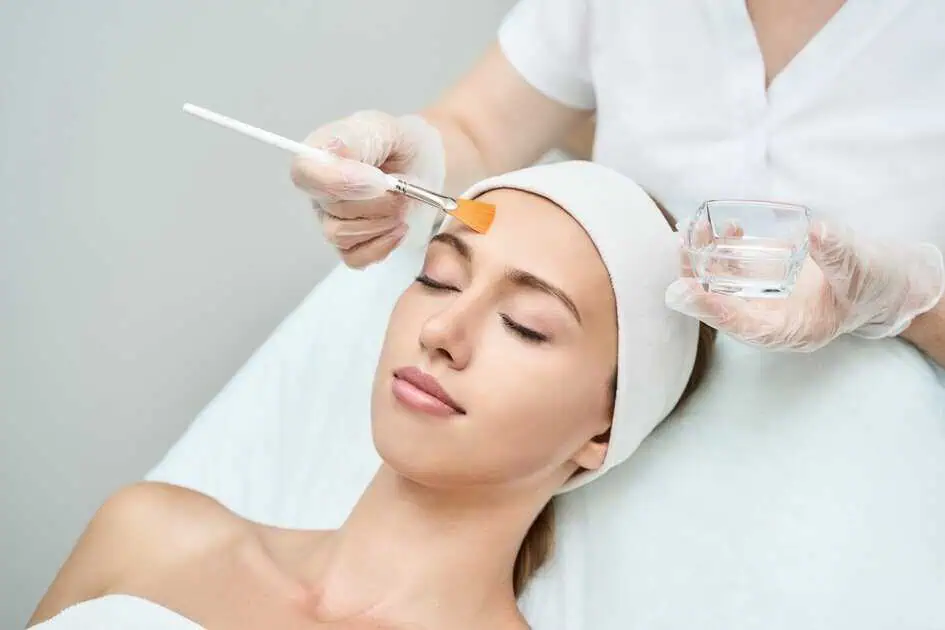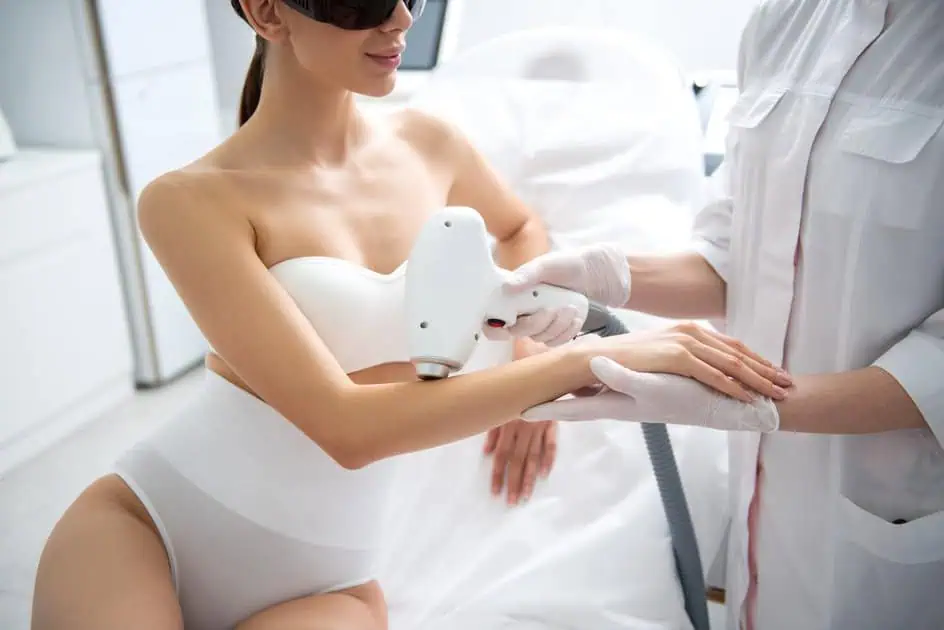Table of Contents
Spider veins, those delicate, intricate patterns of visible veins that grace the skin’s surface, are a common vascular concern affecting many individuals. As part of our commitment to comprehensive vein care, Afzal Clinics seeks to shed light on the underlying factors contributing to spider vein formation. Understanding these causes is pivotal not only for effective treatment but also for formulating preventive strategies.
This exploration delves into the intricate web of influences that give rise to spider veins. Each element plays a role in developing these visible veins, from genetic predispositions and hormonal fluctuations to lifestyle factors and the natural aging process. Join us on a journey to unravel the complexities surrounding the causes of spider veins, paving the way for informed decisions and proactive vein health management.
Unraveling the Web: Understanding Spider Veins
Spider veins, those intricate networks of small, visible veins on the skin’s surface, can concern many individuals. As we delve into vein health, we must understand the intricacies of spider veins, their characteristics, and the factors contributing to their formation.
What Are Spider Veins?
Spider veins, medically known as telangiectasia or venulectasias, are tiny, dilated blood vessels that appear close to the skin’s surface. They often resemble a spider’s web or tree branches, creating a web-like pattern. While they are generally harmless and don’t pose significant health risks, they can be a cosmetic concern for some individuals.
Characteristics of Spider Veins
Spider veins, appearing as small, visible blood vessels near the skin’s surface, boast distinctive characteristics. Recognized by their web-like pattern, they often exhibit red, blue, or purple colors.
Appearance: Spider veins are typically red, blue, or purple and easily visible beneath the skin.
Size: These veins are smaller than varicose veins, ranging from a few millimeters to one centimeter in diameter.
Location: Spider veins commonly appear on the legs, face (especially around the nose and cheeks), and other areas where the skin is thin.
Causes of Spider Veins
Spider veins result from various factors. Genetic predispositions, aging, hormonal fluctuations, sedentary lifestyles, obesity, and sun exposure can contribute to the development of these visible and often bothersome veins.
Several factors contribute to the development of spider veins:
Genetics: A family history of vein issues may increase the likelihood of developing spider veins.
Age: The natural aging process can cause wear and tear on vein walls, making them more susceptible to dilation.
Hormonal Changes: Fluctuations in hormones during puberty, pregnancy, and menopause can weaken vein walls.
Lifestyle Factors: Prolonged periods of standing or sitting, obesity, and lack of physical activity can contribute to spider veins.
Sun Exposure: Prolonged exposure to UV rays can weaken the skin and blood vessels, making spider veins more visible.
Treatment Options
Various effective treatments exist for managing spider veins. Sclerotherapy, laser therapy, and radiofrequency ablation are available, providing tailored solutions for individuals seeking relief and enhanced aesthetics.
While spider veins are generally harmless, some individuals seek treatment for cosmetic reasons or if they experience discomfort. Treatment options include:
Sclerotherapy
A common and effective treatment is where a solution is injected into the veins, causing them to collapse and fade.
Laser Therapy
Utilizes laser energy to target and fade spider veins.
Radiofrequency Ablation
It uses heat to close off small veins, redirecting blood flow to healthier vessels.
Understanding spider veins and their underlying causes is crucial for individuals considering treatment or seeking preventive measures. With our dedication to comprehensive vein care, Afzal Clinics provides valuable insights and personalized solutions for those navigating the intricacies of spider veins treatment. In the following sections, we will delve deeper into treatment options and preventive strategies offered by Afzal Clinics to promote optimal vein health.
Decoding the Intricacies: What Is the Cause of Spider Veins?
Spider veins, those small, intricate networks of visible veins resembling a spider’s web, can be a common concern for many individuals. As part of the comprehensive healthcare services provided by Afzal Clinics, understanding the causes behind these visible veins is crucial for effective treatment and prevention.
1. Genetics and Family History:
A significant factor contributing to the development of spider veins is genetics. If close family members have a history of spider or varicose veins, individuals may be genetically predisposed to these conditions. Weakness in the vein walls and valves can be inherited, making it easier for spider veins to manifest.
2. Age and Hormonal Changes:
The aging process brings about natural wear and tear on the veins, causing them to lose elasticity and become more prone to issues like spider veins. Additionally, hormonal changes, such as during puberty, pregnancy, or menopause, can impact vein health. Hormonal fluctuations can weaken vein walls, making the development of spider veins more likely.
3. Occupational and Lifestyle Factors:
Occupations or activities that involve prolonged periods of standing or sitting may contribute to the development of spider veins. Such positions can exert pressure on the veins, hindering proper blood circulation. Lack of movement and sedentary lifestyles can also be risk factors.
4. Pregnancy:
The physical changes during pregnancy, including increased blood volume and hormonal shifts, can place added stress on the circulatory system. This, combined with the pressure from the growing uterus, can contribute to the development of spider veins in pregnant women.
5. Obesity and Weight Issues:
Being overweight or obese can place excessive pressure on the veins, especially in the lower extremities. This added strain can compromise the integrity of the veins, leading to the development of spider veins over time.
6. Sun Exposure and Skin Health:
While not a direct cause, prolonged sun exposure can contribute to the visibility of spider veins, especially on the face. UV rays can weaken the skin and blood vessels, making spider veins more apparent. Individuals with fair skin may be more susceptible.
7. Gender:
Women are generally more prone to spider veins than men. Hormonal fluctuations related to menstruation, pregnancy, and menopause, as well as the use of hormonal birth control methods, can contribute to this gender disparity.
8. Previous Vein Issues or Trauma:
Individuals who have experienced trauma to the veins, such as injuries or surgeries, may be at an increased risk of developing spider veins. Additionally, those with a history of venous insufficiency or deep vein thrombosis may be more susceptible.
Deciphering the Tapestry: Navigating the Causes of Spider Veins
From the influence of genetics and familial history to the effects of age, hormones, occupational demands, and lifestyle choices, challenges like pregnancy, obesity, and sun exposure further contribute to spider veins.
Afzal Clinics is dedicated to unveiling these factors and steering individuals toward effective treatments. Our commitment to comprehensive vein care is a compass for navigating the realm of spider veins. Contact us today to schedule a meeting.
Afzal Clinics encourages individuals to embrace informed decisions and holistic approaches to vein health, offering tailored solutions and professional insights as pillars for proactive management. Let us decipher the tapestry of spider veins and embark on a journey towards enduring well-being supported by the expertise and commitment of Afzal Clinics.



